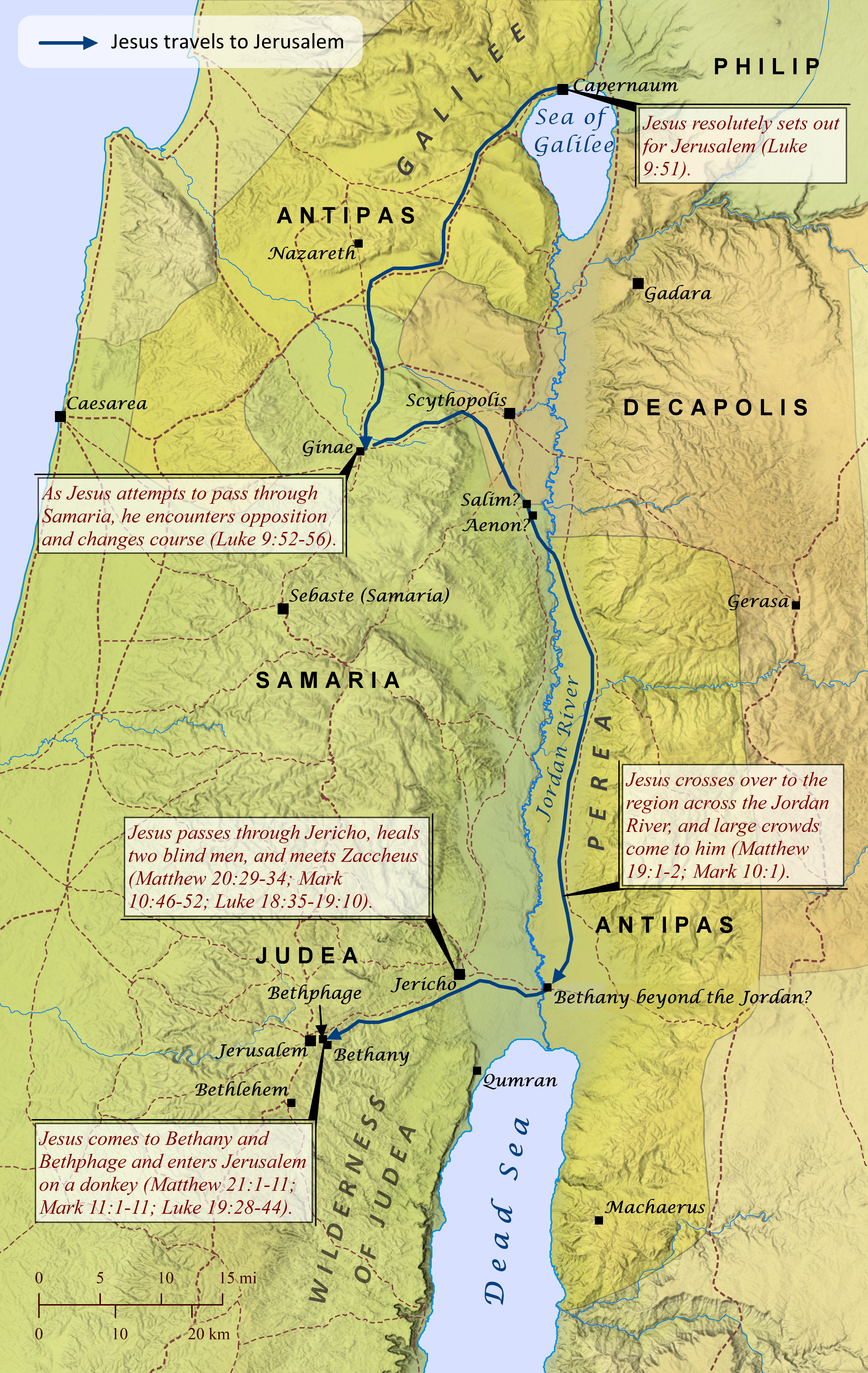Note: This view shows ‘verses’ which are not natural language units and hence sometimes only part of a sentence will be visible—click on any Bible version abbreviation down the left-hand side to see the verse in more of its context. Normally the OET discourages the reading of individual ‘verses’, but this view is only designed as a tool for doing comparisons of different translations—the older translations are further down the page (so you can read up from the bottom to trace the English translation history). The OET segments on this page are still very early looks into the unfinished texts of the Open English Translation of the Bible—please double-check these texts in advance before using in public.
AICNT [[Saying,]][fn] “What do you want me to do for you?” He said, “Lord, that I may regain my sight.”
OEB ‘What do you want me to do for you?’
¶ ‘Master,’ he said, ‘I want to recover my sight.’
WEBBE “What do you want me to do?”
¶ He said, “Lord, that I may see again.”
WMBB (Same as above)
NET “What do you want me to do for you?” He replied, “Lord, let me see again.”
LSV saying, “What do you will I will do to you?” And he said, “Lord, that I may receive sight.”
FBV “What do you want me to do for you?”
¶ “Lord, please, I want to see,” he pleaded.
TCNT “What do yoʋ want me to do for yoʋ?” He said, “Lord, I want to receive my sight.”
T4T “What do you (sg) want me to do for you?” He replied, “Lord, enable me to see again!”
LEB “What do you want me to do for you?” And he said, “Lord, that I may regain my sight.
BBE What would you have me do for you? And he said, Lord, that I may be able to see again.
Moff "What do you want me to do for you?" "Lord," he said, "I want to regain my sight."
Wymth "What shall I do for you?" "Sir," he replied, "let me recover my sight."
ASV What wilt thou that I should do unto thee? And he said, Lord, that I may receive my sight.
DRA Saying: What wilt thou that I do to thee? But he said: Lord, that I may see.
YLT saying, 'What wilt thou I shall do to thee?' and he said, 'Sir, that I may receive sight.'
Drby What wilt thou that I shall do to thee? And he said, Lord, that I may see.
RV What wilt thou that I should do unto thee? And he said, Lord, that I may receive my sight.
(What wilt/will thou/you that I should do unto thee/you? And he said, Lord, that I may receive my sight. )
SLT Saying, What wilt thou I shall do to thee? And he said, Lord, that I might see again.
Wbstr Saying, What wilt thou that I shall do to thee? And he said, Lord, that I may receive my sight.
KJB-1769 Saying, What wilt thou that I shall do unto thee? And he said, Lord, that I may receive my sight.
(Saying, What wilt/will thou/you that I shall do unto thee/you? And he said, Lord, that I may receive my sight. )
KJB-1611 Saying, What wilt thou that I shall doe vnto thee? And he said, Lord, that I may receiue my sight.
(Modernised spelling is same as from KJB-1769 above)
Bshps Saying: What wylt thou that I do vnto thee? And he saide: Lorde, that I may receaue my syght.
(Saying: What wilt/will thou/you that I do unto thee/you? And he said: Lord, that I may receive my sight.)
Gnva Saying, What wilt thou that I doe vnto thee? And he said, Lord, that I may receiue my sight.
(Saying, What wilt/will thou/you that I do unto thee/you? And he said, Lord, that I may receive my sight. )
Cvdl and sayde: What wilt thou, that I do vnto the? He sayde: LORDE, that I maye receaue my sight.
(and said: What wilt/will thou/you, that I do unto the? He said: LORD, that I may receive my sight.)
TNT sayinge: What wilt thou that I do vnto the? And he sayde: Lorde that I maye receave my sight.
(saying: What wilt/will thou/you that I do unto the? And he said: Lord that I may receive my sight. )
Wycl and seide, What wolt thou that Y schal do to thee? And he seide, Lord, that Y se.
(and said, What wilt/will thou/you that I shall do to thee/you? And he said, Lord, that I see.)
Luth und sprach: Was willst du, daß ich dir tun soll? Er sprach: HErr, daß ich sehen möge.
(and spoke: What want you(sg), that I you/to_you(sg) do/put should? He spoke: LORD, that I see may.)
ClVg dicens: Quid tibi vis faciam? At ille dixit: Domine, ut videam.[fn]
(saying: What to_you you_want I_will_do? But he/that_one he_said: Master, as seeam. )
UGNT τί σοι θέλεις ποιήσω? ὁ δὲ εἶπεν, Κύριε, ἵνα ἀναβλέψω.
(ti soi theleis poiaʸsō? ho de eipen, Kurie, hina anablepsō.)
SBL-GNT ⸀Τί σοι θέλεις ποιήσω; ὁ δὲ εἶπεν· Κύριε, ἵνα ἀναβλέψω.
(⸀Ti soi theleis poiaʸsō; ho de eipen; Kurie, hina anablepsō.)
RP-GNT λέγων, Τί σοι θέλεις ποιήσω; Ὁ δὲ εἶπεν, Κύριε, ἵνα ἀναβλέψω.
(legōn, Ti soi theleis poiaʸsō; Ho de eipen, Kurie, hina anablepsō.)
TC-GNT [fn]λέγων, Τί σοι θέλεις ποιήσω; Ὁ δὲ εἶπε, Κύριε, ἵνα ἀναβλέψω.
(legōn, Ti soi theleis poiaʸsō; Ho de eipe, Kurie, hina anablepsō. )
Key for above GNTs: yellow:punctuation differs, red:words differ (from our SR-GNT base).
